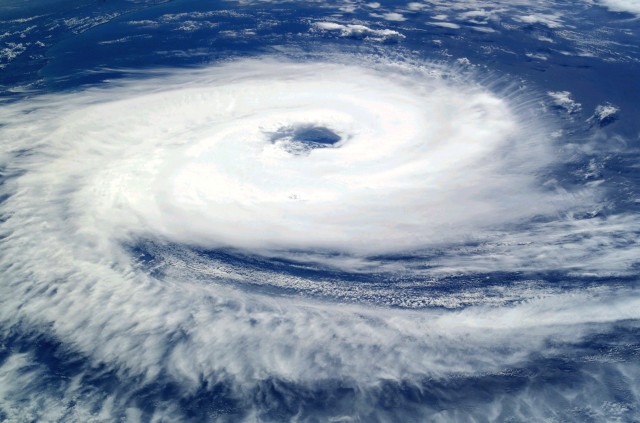cyclones
CYCLONES ARE HAZARDOUS weather conditions distinguished by extreme blasts of wind moving in a circular pattern. Cyclones generally appear over tropical waters; however, some are able to reach land, where they inflict significant damage on buildings and communities.
Cyclones can be placed into categories such as hurricane (Western Hemisphere) and typhoon (Eastern Hemisphere). The categorization assigned to a cyclone is dependent upon where it originated. Wind speeds in cyclones can surpass 100 mi per hour (160 km per hour). Tropical cyclones with milder conditions are known as tropical storms.
Cyclones build over tropical seas. Heat gives cyclones their energy. Consequently, the ocean over which a cyclone forms must be warm. Other conditions required for a cyclone include a rapidly cooling atmosphere, a minimum of 300 mi (500 km) distance from the equator, and a slow vertical wind not exceeding 23 mi per hour (37 km per hour). This vertical wind is the product of differences between winds in the lower and upper portions of the atmosphere. The major contributor to the formation of a cyclone is a disturbance in the form of a thunderstorm or group of showers.

When all of these factors come together, conditions are right for a tropical cyclone. However, cyclones are spontaneous; a minute variation in one variable can be the difference between a hurricane and a thunderstorm.
Known as the “eye,” the circular area in the center of a cyclone has an environment quite different from the area it surrounds. Calmness and a light breeze characterize the eye. Temperatures and air pressure are normally higher, and the sky is generally very clear.
Strong cyclones can cause damage ranging from crop destruction to the total devastation of buildings, depending on the severity of the cyclone. Cyclones become most dangerous as they hit land and spawn tornadoes, which are formed when tropical cyclones begin to lose their power. The major variation between tropical cyclones and tornadoes is their size. While the diameter of a tornado is measured in meters, the diameter of a tropical cyclone is measured in kilometers. One of the most destructive cyclone-spawned tornadoes in the United States caused around $100 million worth of damage to the Austin, TEXAS, area in 1980.
Besides property damage, cyclones (and the ensuing tornadoes) cause death. Objects lifted from the path of the extreme wind are flung about as high-speed projectiles. In 1964, 22 people were killed by a tornado that hit the LOS ANGELES area in CALIFORNIA.
Meteorologists have come a long way in the forecasting of tropical cyclones. In their forecasts, they gather information from the global numerical weather prediction model, which is also used by many meteorological centers, to aid them in producing accurate warnings. The World Meteorological Organization has created Regional Specialized Meteorological Centers (RSMCs) that issue warnings to nations, which then issue warnings to the public.
Warnings are issued when a cyclone is likely to affect communities within 24 to 48 hours. The warnings include a forecast that predicts which communities may be affected, severity, movement, etc. depending on how severe a cyclone is, residents may be asked to take certain precautions or even evacuate the possible affected area.
CATEGORY WARNINGS
Cyclones are divided into five categories determined by wind speeds, with category 5 being the worst cyclone of all. A category 1 warning is issued when wind gusts are less than 77 mi per hour (125 km per hour). A category 2 warning is issued when wind gusts are from 77 to 105 mi per hour (125 to 169 km per hour). When winds are from 106 to 139 mi per hour (170 to 224 km per hour), a category 3 warning is issued. Category 4 is when winds reach speeds from 140 to 173 mi per hour (225 to 279 km per hour ). The most destructive of all is a category 5 cyclone with winds faster than 174 mi per hour (280 km per hour).
In order to avoid confusion when tracking the development of these storms, cyclones are regularly named. The naming of cyclones began during World War II when meteorologists in the U.S. armed forces unofficially named the cyclones giving them female names. During the early 1950s, tropical cyclones that formed in the North ATLANTIC OCEAN were named from the phonetic alphabet. In 1979 the U.S. National Weather Service used both male and female names. When an exceptional cyclone occurs, its name is taken out of use to avoid confusion. More than one cyclone can occur at the same time, and if names are given, there is less confusion about which cyclone is being described. Cyclones can range from simple tropical storms to devastating hurricanes spinning at furious speeds. Their effects can be disastrous and long-lasting.